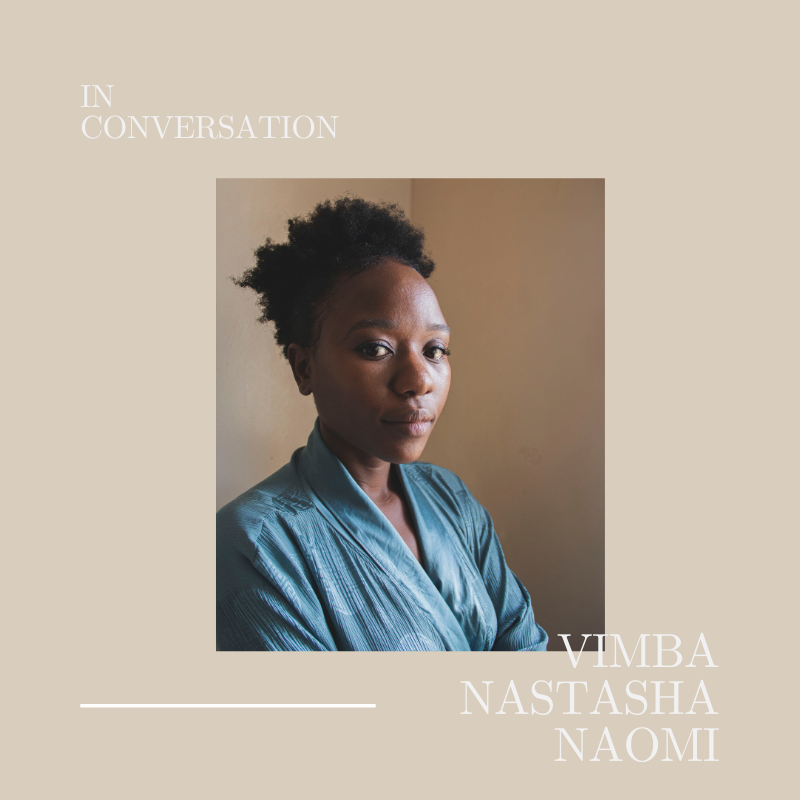Tell us about yourself, your work and how you got started.
Vimbai Natasha Naomi (VNN) is a Zimbabwean Slow Fashion brand that I, Vimbai Mupfurutsa, founded. The brand is an expression of art through fashion, focusing on intentional design that is conceptual, ethical and sustainable. VNN is committed to innovation and experimentation, creating designs that are visually and aesthetically appealing. The brand expresses the symbolic nature of clothing, and the metaphor or illustration behind it, while daring to push visual boundaries and challenging the ideals of traditional fashion. We adhere to Leventon’ observation that “dress is full of sly, subjective meaning that we decode, often subconsciously. The removal of its functionality can allow us to view and analyze it objectively”. The brand’s use of conceptual fashion becomes a subject for thoughtful analysis and speculating. Further, its aspiration to create meaning encourages intellectual thought processes that raise levels of awareness. It is necessary for us to challenge existing perceptions on fashion and society through creating work with innovative cuts, silhouettes and fabrics, to depict philosophical ideals of beauty. Visual communication becomes the main aesthetic.
VNN finds inspiration in the changing social and urban environment through conceptual work that reflects in-depth research, while making conscious decisions in the conservation of the environment and humanity. From a young age, I grew up with a love and fascination for art and clothing. This passion fuelled my decision to study fashion at the Nelson Mandela Metropolitan University in South Africa, where I obtained a Master’s Degree. During my studies, I completed several internships in Retail and Theatre. I also partook in an Advanced Fashion Design summer course at Central Saint Martins, London.
Born and raised in Zimbabwe, I am a steadfast fashion designer whose work sets to inspire ethical design, using sustainable methods in the production processes of the business. Through observing conventional notions of fashion, the brand aims to then invalidate the rules with subtle or radical garments. VNN uses fashion as an expression of ideology or social critique, stimulating minds and emotions. She achieves this through careful use and reuse of locally sourced fabrics, while adopting a zero-waste policy.
How would you describe your creative process?
The design processes used in conceptual fashion have inspired the approach used in the overall brand identity. In a piece by Goldfarb and Wilson (1993:77), the writers note that all visual elements considered in conceptual fashion “reinforce a design concept”. The value of using symbolism as a means of describing moods and ideas has helped the brand consider ways in which to recycle materials and adopt an anti-waste approach when it comes to production. The use of different textures creates diverse compositions, which are then later refined into ready-to-wear garments. This dynamic is perhaps echoed in Barthes’ (2006:28) statement where he writes that, “dress is a kind of text without end. Clearly, meaning is not located in the finished object, it can be found in a tiny detail or in a complex outfit”. Similarly, the final production of garments is a cohesive collection that acts as a visual comment on current events.
So, this interview is about exploring the notion of objects as living things with experiences. This idea forces us to think beyond the life of a product, i.e., production, and forces us to reflect about behaviors, norms that these products or items create or take part in. Does this notion manifest in your work? If yes, how?
VNN believes that we have been given the gift of stewardship on this earth to ensure that the environment and all its inhabitants are preserved. As designers, we have the platform to increase awareness around issues like social responsibility, conservation of the earth’s resources and fair trade. As a result of certain horrific events that have taken place in the world, namely the collapse of Rana Plaza in Bangladesh, it has become the brand’s responsibility to honor slow fashion practices in its daily endeavors.
Based on a variety of findings, the techniques of suggestion and symbolism that are adopted in the creation of conceptual designs have driven the business to carefully consider fabric consumption, recycling and waste. As a result, the business relies on the use of materials such as end of run fabrics and short pieces that are sold at wholesale clearance price. These fabrics are store leftovers or rejects. This ensures that unnecessary storage of unwanted fabric, that is usually in perfect condition, is not left polluting the environment or using up unnecessary space. This has enabled the brand to be experimental in its use of color, textures and overall appearance of each garment. Consequently, clothing not only is functional but more importantly becomes a visual statement. Müller (2000:4) notes that the relationship between art and fashion “has given rise to a number of perspectives, including the reassessment of the meaning of life through dress and the use of clothes as an aid to artistic expression”.

Image courtesy of the designer
The core of the brand’s identity is greatly inspired by contemporary fashion designers such as Issey Miyake and Alexander McQueen, who have adopted design methods that are conceptual, similar to the fine arts, by producing fashion that is concerned with viewpoints and meanings that push boundaries and challenge ideals. Conceptual fashion is presented as a method of conveying specific moods and emotions, where designers adopt design techniques that are “normally associated with contemporary art, by creating clothes that are better suited to exhibitions in galleries and museums” (Svendsen 2006:92). Consequently, fashion can be used as artwork that becomes a symbolic statement for a designer’s thoughts. Such practices allow the brand to push ideas over appearance and self-reflection over resolution. Instead of regular fashion shows which motivate fast fashion, the brand uses galleries and museums to exhibit its creations.
How do you think this notion can influence conversations on sustainability moving forward?
As means of challenging the attainment of greater sustainability, community development through outsourcing local labor has become the brand's new focus. Currently, the day-to-day responsibilities of the business are run by one person. Initially this was implemented to keep the business within its ‘Slow Fashion’ boundaries. However, with prospects of future growth, more skilled labor is required. Thus, it is the brand’s responsibility to ensure that this new venture adopts ethical values that ensure the respect and safety of those involved.
The brand seeks to give back to the community by offering workshops where individuals within these underprivileged communities can be given opportunities to work on certain projects, while learning new skills. Workers will be paid fairly, all work conditions will be safe, and no children will be exploited in the process.
What would be your advice to designers out there focused on ethical and sustainable production?
I would encourage other designers to think outside of the box when it comes to creating a sustainable and ethical brand. The commitment goes beyond popularity, but should be a thoughtful consideration of lives and our planet. We are being watched constantly so it is only befitting to regard and practice sustainable methods responsibly.
And flipping that question, what would be your advice to consumers on buying sustainably?
The challenge with consumerism is that we have, for decades, been led to believe that the more we attain the more successful we are. I believe true wealth is in preservation and not excess. If we as designers can show consumers how to be sustainable in the way that we govern our business philosophies then it will automatically affect the choices they make. For example, as designers, our excessive need to produce multiple “brand new” collections throughout the year only solidifies the notion that consumers have that they need to be constantly buying more clothing to “stay on trend”. Let us as the designers lead by example and guide consumers into making better choices to purchase clothing based on the quality they personify and not quantity.

Image courtesy of the designer
In the current context, what are some of the challenges that have been present in your work with various communities?
I would say my biggest challenge has been trying to introduce new methods in making clothes that are not conventional. Often these new methods are misunderstood and are misconstrued to be untidy and unfinished work. Another challenge is having to justify my work and process for communities in order for them to understand the end goal.
How did you navigate these challenges?
Honestly, what has really helped me is focusing on consumers and communities that are willing to go on the sustainability journey with me. This has gifted me the freedom to express myself and to continually re-evaluate the nature and purpose of my work. I thrive on awareness, transparency and loyalty; and these core values have become the driving force of my brand.

